Samarkand is a truly unique city. There are so many architectural monuments concentrated here, each of which has its own history, shrouded in legends and folk tales. For example, the odious monument of Ishrathona, erected in the XV century and for some time forgotten by researchers and urban planners. At this place, where the ancient mausoleum is located, there was once a Firuz Garden - Bogi Firuz with an area of 1.5 hectares.
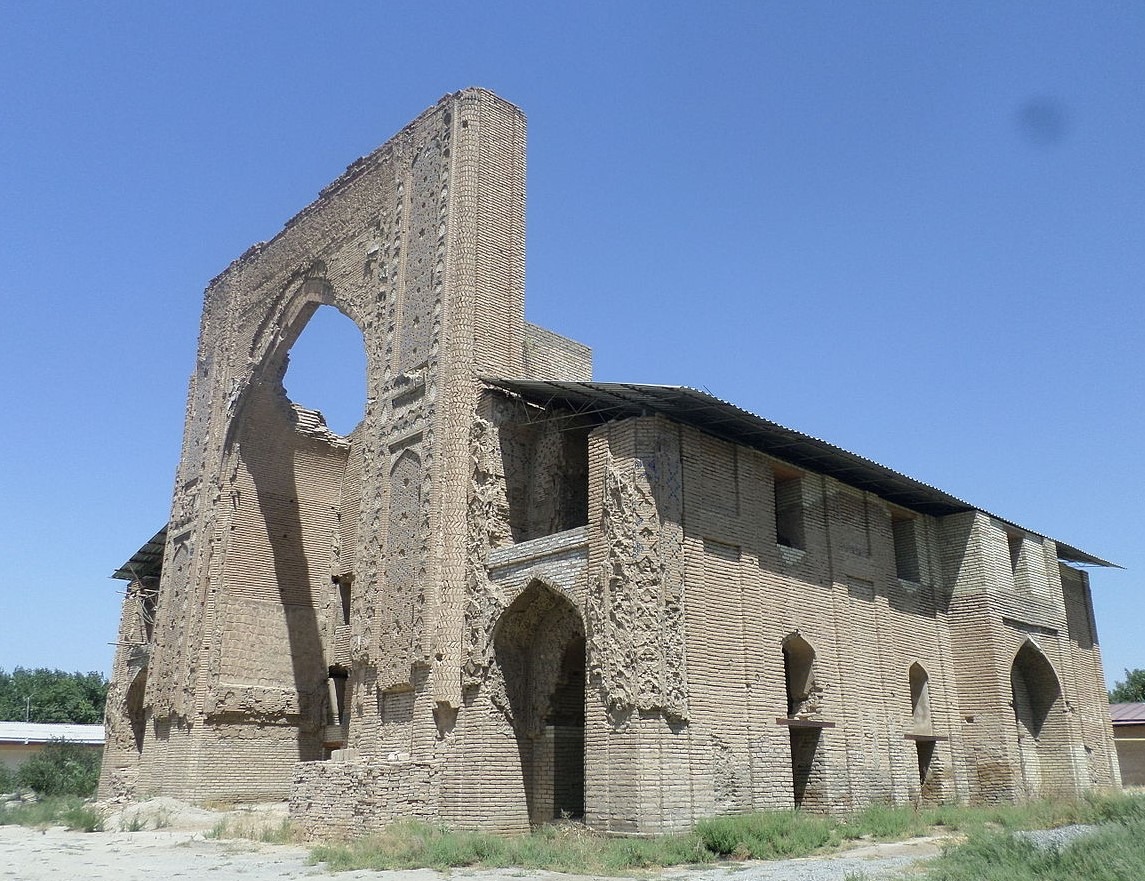
For the first time Ishrathona was mentioned in the historical treatise of the 30s of the XIX century “Samaria". It states that Ishrathona was founded by the daughter of Emir Jalaliddin - Habiboy Sultan.
In the middle of the XIX century, a member of the Russian embassy in Bukhara, topographer Yakovlev, drawing up a plan of Samarkand, marked the building to the south-east of the fortress gate with a large conventional sign and the inscription: "The structure of the Timurleng era." 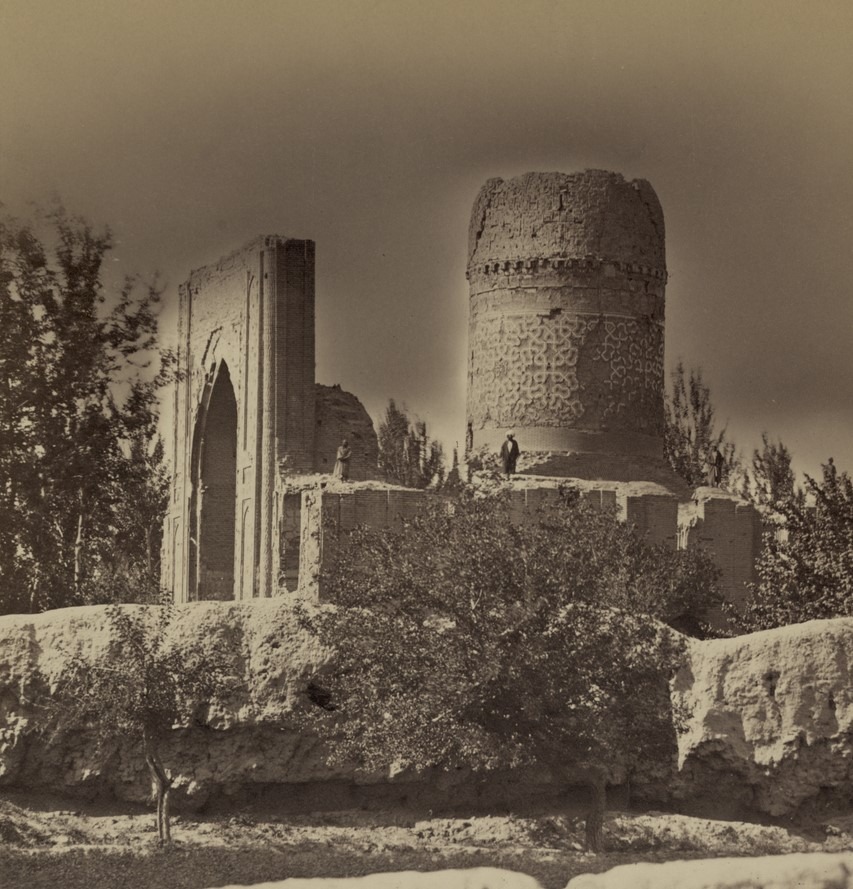
In the study of Samarkand, academician V. Barthold Ishrathona named a Nestorian monument turned into a pleasure palace of the khan.A few years later, archaeologist V. Vyatkin discovered an interesting document of 1464, a waqf certificate drawn up in Samarkand, transferring the burial vault of the land plot to storage, slaves and various possessions of Habiba Sultan-begim.
Up to 60 clerical and court officials close to the ruler of Samarkand, Sultan Abu Seyid, were involved in the preparation of the document.In the Waqf charter of the building, it is reported that a noble woman, the wife of Timurid Abu Seyid - Habiba-Sultan, built a domed building over the grave of her daughter, Princess Havend-Sultan-biki.
The mausoleum got its name from "Ishrathona" in Persian, "House of Amusements", from Samarkand folklore of the XIX century, which told about the romantic meeting of Amir Temur with a girl, after which the great emir ordered to build a palace here.
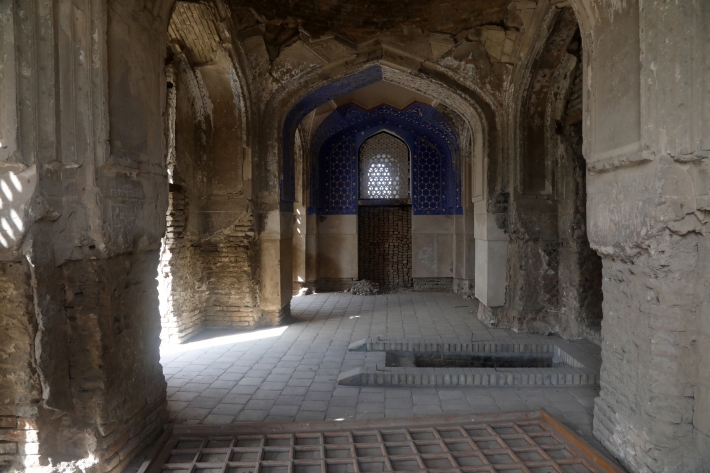
The first archaeological work in Ishrathona began in 1939-1940 by academicians M. E. Masson and G.A. Pugachenkova, as a result of which it was established that the mausoleum is located on a large foundation, deepened by almost 5 meters.
Ishrathona was a unique structure of the XV century. Prominent figures and mothers of that time took part in the construction of the palace. At that time, a revolution was carried out in Samarkand architecture. Many researchers lavished praise on the art of its creators, noting not only the unrestrained luxury of the design of this building – either a mausoleum or a palace, - but also the fact that fundamentally new architectural techniques and solutions were involved in the construction.
The complex includes: a mosque with a strict modest interior, a ceremonial apartment with rich paintings in the "kundal" technique, where funeral processions for the last prayer were held, and a group of rooms on the 1st and 2nd floors.
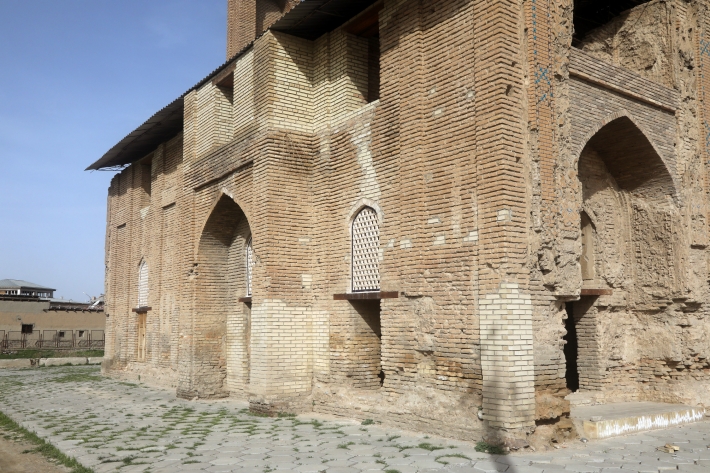
Four spiral staircases lead to the second floor, where several small rooms are located, above the steps lead to a flat roof, formerly fenced with a barrier. In Ishrathona there is also an underground floor - an 8-sided crypt, covered with a dome. In terms of size and richness of decoration, it had no equal in Central Asian architecture. The walls of the crypt were encircled by a bright mosaic panel, the floor was lined with marble slabs.
The new architectural solution has also caused new decorative techniques. For the first time, the technique of wall painting – "kundal" - is found here. Its essence is that the main pattern is made in relief, the background is covered with gold, and the drawing is painted in different colors, or, conversely, the ornament is gilded by coloring the background. The murals of the main hall and the mion-sarai of Ishrathana have suffered greatly from time and bad weather.
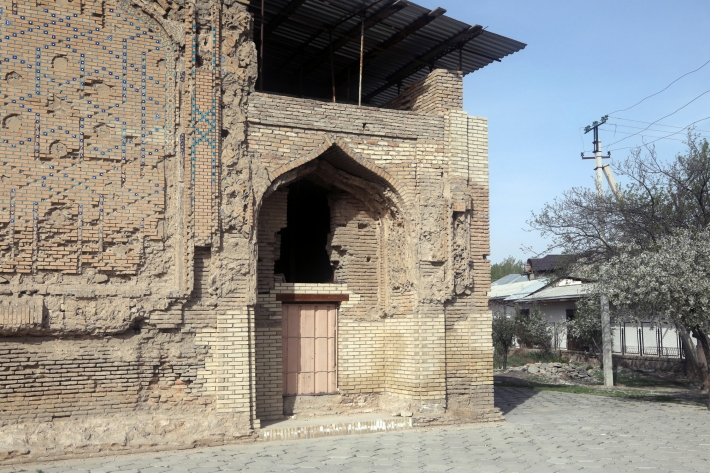
In the XVI century, the mausoleum fell into disrepair. More precisely, it was simply looted. And the reason for this was the rapid construction activity that began in the XVII century in Samarkand. At first, Ishrathona lost her marble panel. Since the Sher-Dor and Tillya-Kari madrassas erected on Registan needed large slabs. The marble tombstones were also moved to the nearby Abdi-Darun cemetery, where the old slabs were replaced with the names of new faces.
Working hours: 9:00 AM - 6:00 PM, Mon-Fri
For any questions
ПОЛЬЗОВАТЕЛЬСКОЕ СОГЛАШЕНИЕ
1. Определение
Настоящее Пользовательское соглашение (далее — Соглашение) является Публичной офертой в соответствии со статьёй 367 Гражданского кодекса Республики Узбекистан от 21.12.1995 (https://lex.uz/ru/docs/111181#162763) и регулирует порядок использования материалов и Сервисов сайта Государственного унитарного предприятия «Национальный PR-центр» (далее — Предприятие), размещённого на веб-сайте и поддоменах Национального Туристического Информационного Центра: https://uzbekistan.travel/ (далее — Сайт).
Посетитель и (или) Пользователь подтверждает, что ознакомлен, полностью и безоговорочно принимает все условия настоящего Соглашения и обязуется их соблюдать.
Использование Сайта Пользователем означает полное принятие данного Соглашения «как есть» в форме акцепта.
Соглашение вступает в силу с момента посещения любой страницы Сайта и (или) регистрации на Сайте и действует бессрочно во время пользования Сервисами Сайта.
Настоящее Соглашение обязательно для исполнения всеми Посетителями и Пользователями без каких-либо изъятий и дополнительных согласований.
Пользователь обязуется самостоятельно проверять актуальную редакцию Соглашения на Сайте перед использованием Сервисов.
2. Предмет Соглашения
Предметом настоящего Соглашения являются правила использования материалов Сайта и предоставление Посетителю и (или) Пользователю возможности использования Сервисов Сайта.
Предприятие является правообладателем исключительных прав на Сайт в целом и на его составные части, включая все виды контента: логотипы, товарные знаки, тексты, статьи, аннотации, иллюстрации, фотографии, графику, аудио- и видеофайлы, пользовательские интерфейсы, дизайн, структуру, программы, базы данных.
Я прочитал(а) и соглашаюсь с условиями использования сайта и политикой конфиденциальности.
